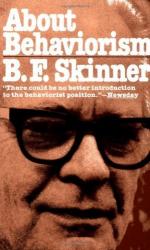|
This section contains 1,619 words (approx. 6 pages at 300 words per page) |

|
Overview
Early in the twentieth century, scientists became interested not only in discovering new organisms, but in understanding more about the behavior of known organisms. A group of biologists took special note of social behavior, and learned about the amazingly complex organizations of a wide range of animals from protozoa to bees, and ants to birds. One of the best-known behaviorists of the period was Karl von Frisch (1886-1982), who established how honey bees communicate with one another about the location of a food source. That study has become a staple in biology and behavior textbooks. Other major researchers who made important contributions to the study of animal behavior during this time included Warder Allee (1885-1955), Herbert S. Jennings (1868-1947), Nikolaas Tinbergen (1907-1988), Konrad Lorenz (1903-1989), and William Morton Wheeler (1865-1937).
Background
One of...
|
This section contains 1,619 words (approx. 6 pages at 300 words per page) |

|


